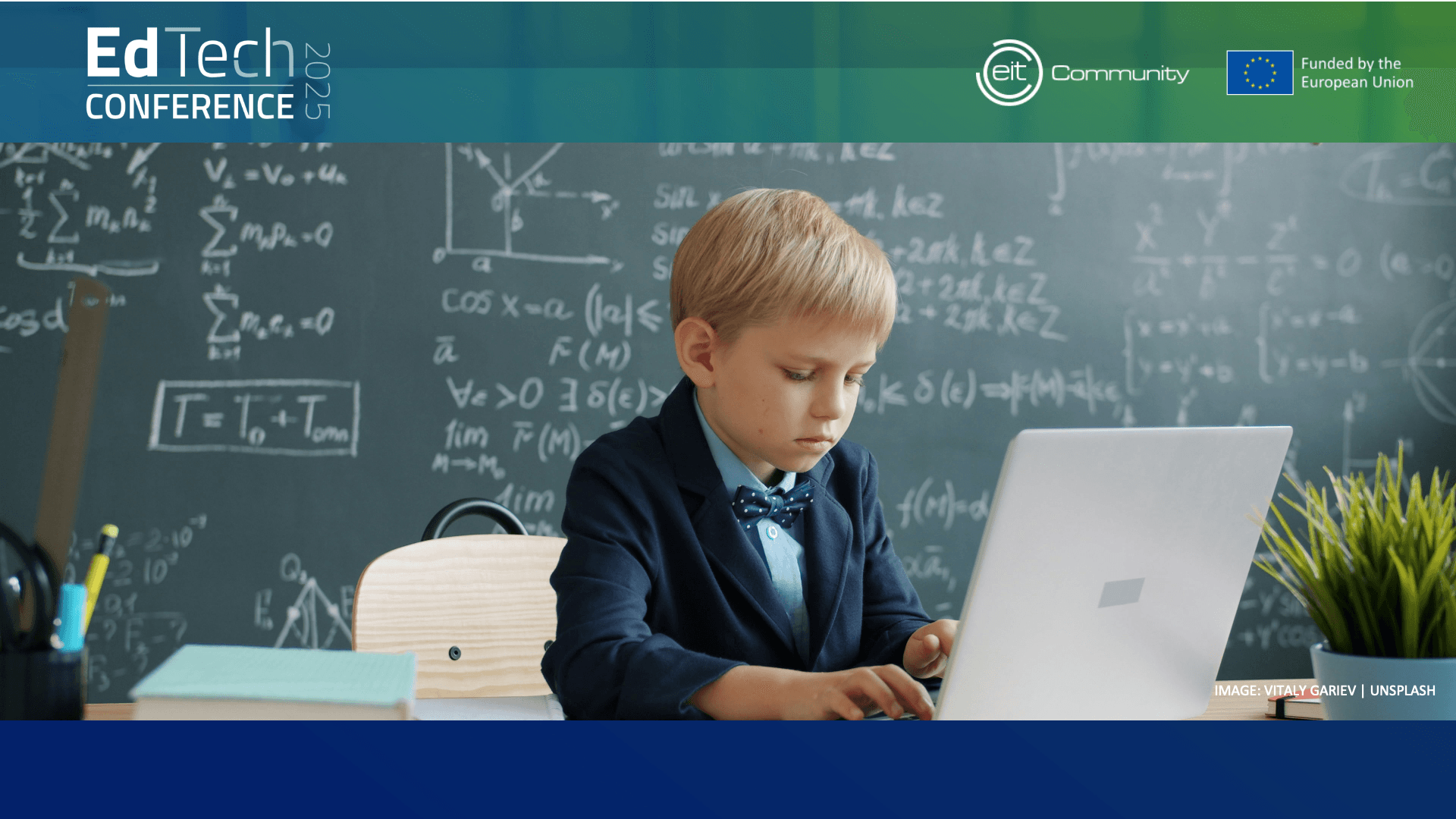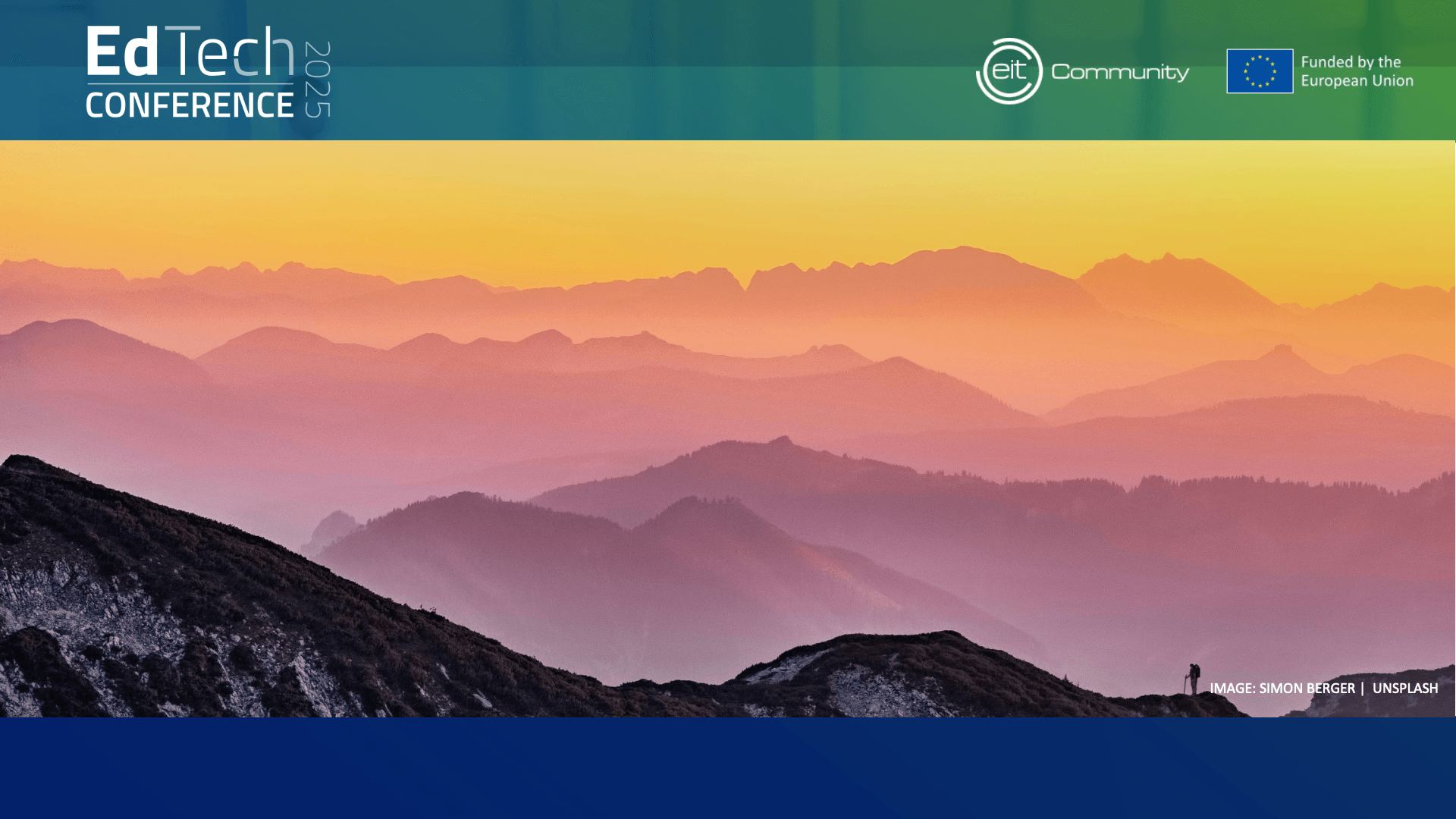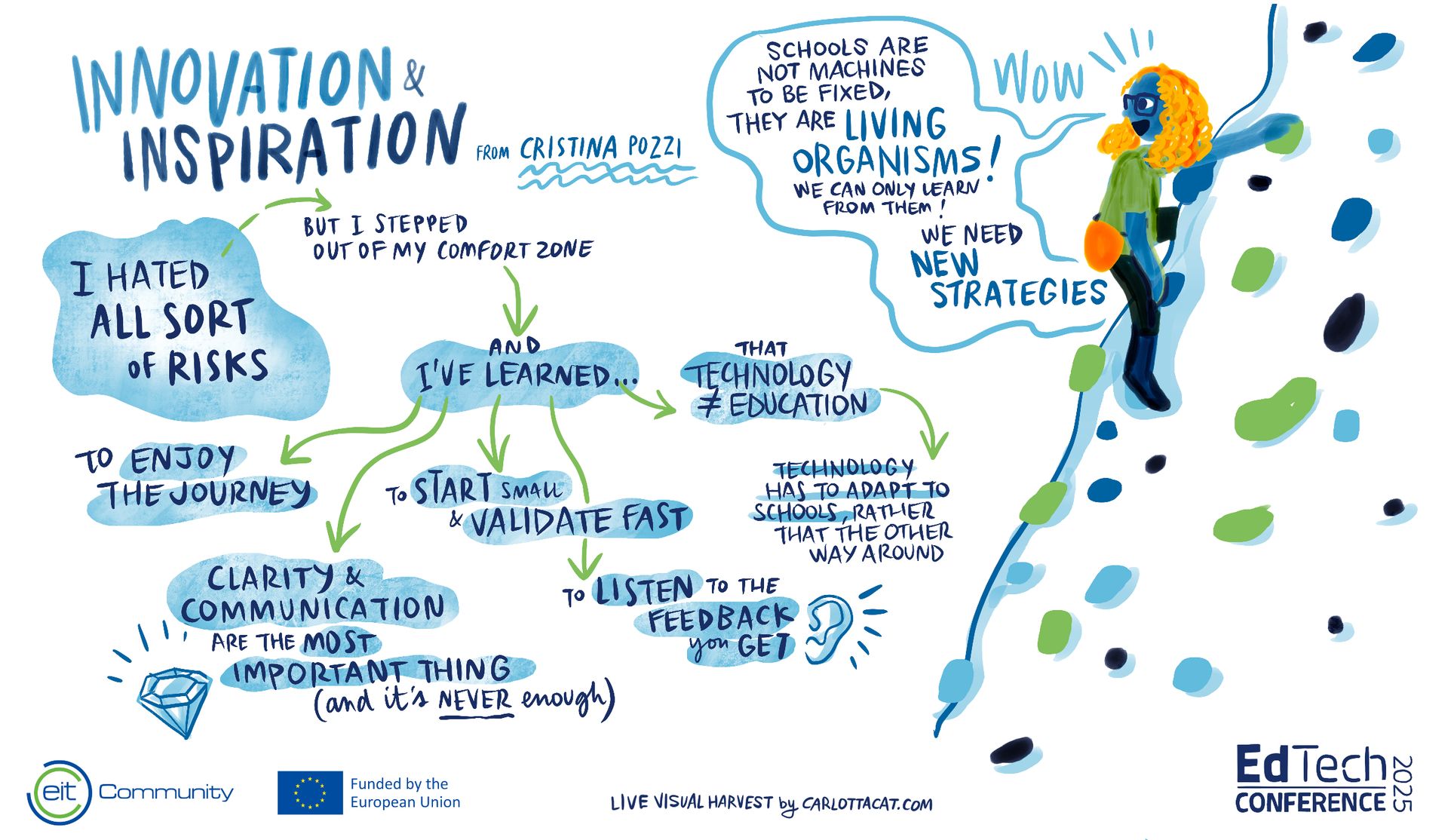Learning At The Edge - EIT EdTech Conference
My speech at the EIT EdTech Confernce 2025
Read below or watch here

I am afraid of heights. I’ve repeated this sentence to myself a billion times.
I was in Paris for work once and wanted to see as much of Paris as possible in a short time. So, I ended up on the Eiffel Tower. As soon as I stepped out of the elevator, I froze. I couldn’t go near the edge and kept repeating to myself: “I’m afraid of heights.”

And here I am, a few years later, climbing a mountain wall. Still terrified, but this time I could move.
So, what changed?
What changed is that I learned how to act outside my comfort zone, and I have my first start-up to thank for that.
Creating a start-up is, in many ways, like climbing that wall. The ground feels far away. You feel exposed. But you learn to trust the rope, your partners, your vision.
When I co-founded our first company, I used to tell myself: “I hate risks.” Yet I answered the call for adventure from my co-founder. Ten years later, we reached 40 million euros in turnover and sold the company to a multinational competitor.
And I learned also a few other things that I keep close ever since.

People first.
Every organization is made of people. The team you choose, your co-founders, partners, and colleagues, will determine not only your success but also who you become, and how much you will enjoy your journey with them. Choose the ones who will challenge you when you’re wrong, celebrate with you when you’re right, and stay when things get hard, because they will.
Communication matters.
In all directions. Once, we asked a customer to “send us” her social security number, and she physically mailed it to our office. That day we learned that clarity is everything. This lesson has been the most important when I started working in education, having to connect with such a diverse group of people made of teachers, students, families…
Start small, validate fast and stay flexible.
We did so many mistakes, spending way too much money and time on product development with too little testing. Today, digital technologies allow us to prototype, validate, and pivot faster than ever, if we have the courage to listen to the feedback.
But don’t lose focus. We need to make something work before chasing new opportunities.
But we also need to stop, look around, and recognize when the context has changed, because it always does and we may need to adapt. New horizons will have unfold before our eyes while we were walking.

After selling my first company, I was ready for a new challenge, and I founded right away a non-profit organization.
I wanted to empower young people with the skills to navigate the future using digital tools, STEM education and futures thinking.
I thought I had a solution. After all, I had spent two-thirds of my life in classrooms and another third building an innovative company.
And I soon realized I wasn’t the only one thinking this way. We all care deeply about education, we all have direct experience and many of us tend to believe (1) it needs fixing, (2) that we know how to do it, and (3) that technology will somehow do the trick, just as the narratives around technology and education have been telling us for years.
I knew nothing of course.
Schools are not machines to be optimized. They are living organisms, they are complex, dynamic and deeply human. And no single actor has all the answers.
I started from scratch and after spending years on the road, visiting classrooms and working almost everyday side by side with teachers and learners, I felt that I was beginning to understand how schools worked.
And then, Covid-19 happened.
And I was suddenly invited to join the task force of the Ministry of Education to reimagine education after the emergency.
It was a humbling experience. It taught me that learning never ends, and that systems change only when public, private, and civil society work together.

After that, over the last five years, my non-profit raised money and evolved into an EdTech initiative supporting schools with training, digital tools, and content. Even as a now for-profit company I realized that Italian k-12 education is not merely a market. It’s a community. Competition doesn’t work the same way, it’s about partnerships, trust, and shared purpose.
Technology without pedagogy doesn’t work. In Italy, we’ve been very lucky. A lot of funds were made available for school in the last years. Schools could buy a lot of technological equipment. But many struggled to integrate them, because the funding for technology was separated from the funding for teacher training.
Some people tend to think that technology equals innovation.
But this is wrong. We don’t need cutting-edge technologies to innovate.
We don’t learn how to drive on a Ferrari, right? Likewise, we don’t need the most powerful AI to transform education. We need the right one. One that is not an adaptation of what we use in the workplace. One that is ethical, age-appropriate, culturally fit and inclusive.
As Ed-Tech entrepreneurs our job doesn’t end when we sell a tool or a service. We need to sit in the process with teachers and learners and make sure that it creates value for them. That it promotes collaboration, agency and metacognition.

Today, after a very recent second exit, I can finally enjoy the view of new horizons. I have the time to look back and reflect on what I’ve learned, and to look ahead at the challenges and opportunities that come with technologies, such as AI.
AI is now everywhere. It is already impacting learning in informal, non-formal and formal education. All knowledge is mediated by AI and we now live in a new paradigm that I call AI DIXIT, “AI itself said it. Therefore, it must be true.” “I’ve seen it on that social network” or “found it online…”
With a new paradigm, we need new strategies to make sure we are safe in the classroom, but also that we are when we step out of it. Equipped with the skills we need to cope with the challenges we may encounter.
We need to know AI deeply and experiment safely with it first-hand.
Professor Weizenbaum, the creator of the very first chatbot, ELIZA, once wrote that general-purpose technologies, such as in his view AI, are often slower in their development, and that true innovation comes not from their original design, but from the ways in which people use them, in unexpected and transformative ways.
Think about the early days of the web. It was designed primarily as a tool to share files among researchers. Nobody anticipated that one of its most disruptive uses would be something as simple as sending each other emails. And yet, that unplanned application changed everything, forever transforming how we communicate, work, and live.
Today, we stand at a similar threshold.
We cannot foresee all the ways digital tools, and especially AI, will evolve and how they will impact learning.
But we get to be the ones who experiment and innovate with it.
We can decide why we use it, and who we want to become with it. Designing innovation in classrooms, not in boardrooms.
So here I am, set for my next journey, exploring these horizons in front of us. I hope some of you will be willing to join me. Let’s build, and imagine, together, the most meaningful possible future of learning.
